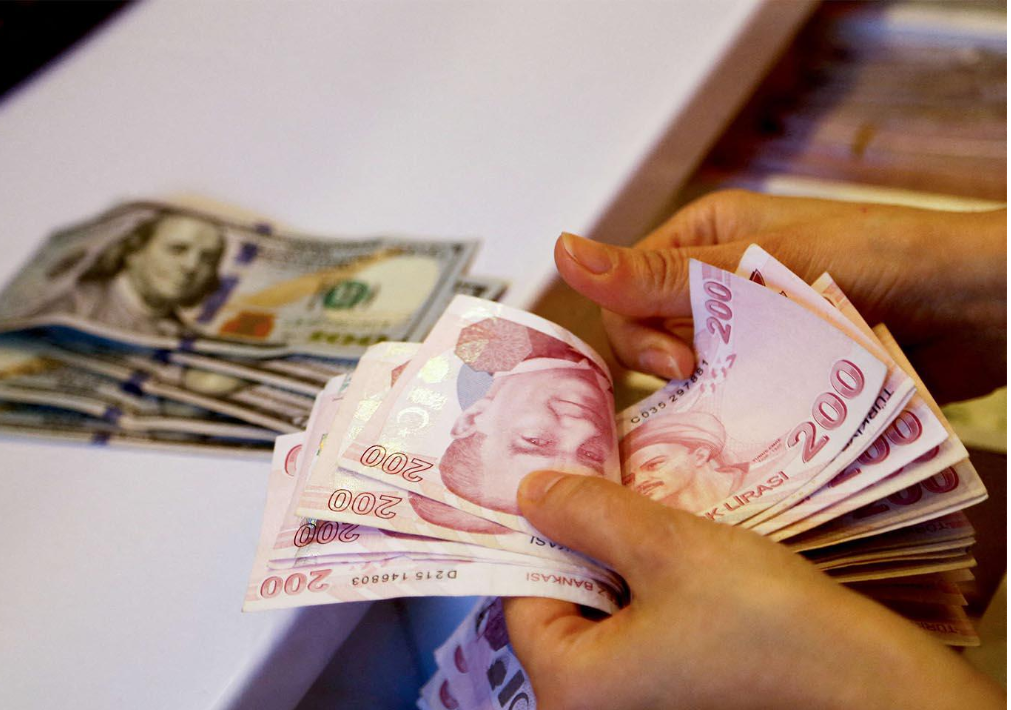At Turkish time 6 pm, dollar/TL was trading at 14.20-21, despite what Bloomberg News claimed to be heavy intervention by Central Bank of Turkey and state banks. TL’s losses came despite residents and corporates—reportedly converting over $20 bn into TL, to join the FX protected TL deposit scheme.
Analysts warn of further downside for Turkey’s sickly currency.
The Turkish lira plummeted more than 5% on Thursday as investors sought safe havens after Russian forces invaded Ukraine, sparking concerns of fresh inflationary pressure in Turkey and prompting Ankara to call for confidence in the local currency.
The lira weakened to as much as 14.62 against the dollar, its weakest level since late December, amid a full-blown currency crisis. It later pared some losses, standing at 14.23 by 1332 GMT, described Reuters Thursday’s market action.
Ipek Ozkardeskaya, senior analyst at Swissquote, said it would be more difficult to keep the lira at a fixed level given the safe-haven flows to the dollar.
“Pressure is increasingly building and the cost of keeping the lira stable is therefore increasing,” she said.
“This doesn’t mean that things will automatically get out of control, but the risks of seeing a significant drop in the lira has increased,” Ozkardeskaya added.
Turkey’s Energy Shortage Reaches Critical Point
Turkey’s Treasury said in a statement that it would take the necessary measures against the economic impact of the conflict, and called on Turks to maintain confidence in the lira.
State banks sold about $3.5 billion to support Turkey’s lira this week, according to traders who asked not to be identified because they’re not authorized to speak publicly. State banks don’t comment on their interventions in the foreign-exchange market, but a former Turkish central bank governor said in 2020 that government-owned lenders carry out transactions in line with regulatory limits and may continue to be active in the currency market, claimed Bloomberg.
Fed Interest Rate Hikes Will Hurt Turkish Economy (And Other Emerging Markets) Badly
“The slide in the lira past the 14 per dollar level reflects the immediate worsening in the risk environment following Russia’s attacks on Ukraine, as the lira is particularly vulnerable to risk aversion,” said Ima Sammani, a foreign-exchange analyst at Monex Europe.
This week’s intervention resulted in a shortage of lira liquidity offshore, spurring a surge in the cost of overnight funding to more than 104% from 14.5% a week earlier.
An extended conflict between Russia and Ukraine could affect Turkey’s economy if it results in fewer tourists from those countries or higher energy and food costs that could fuel consumer inflation already running at about 50%.
Follow our English language YouTube videos @ REAL TURKEY:
https://www.youtube.com/channel/UCKpFJB4GFiNkhmpVZQ_d9Rg
And content at Twitter: @AtillaEng
